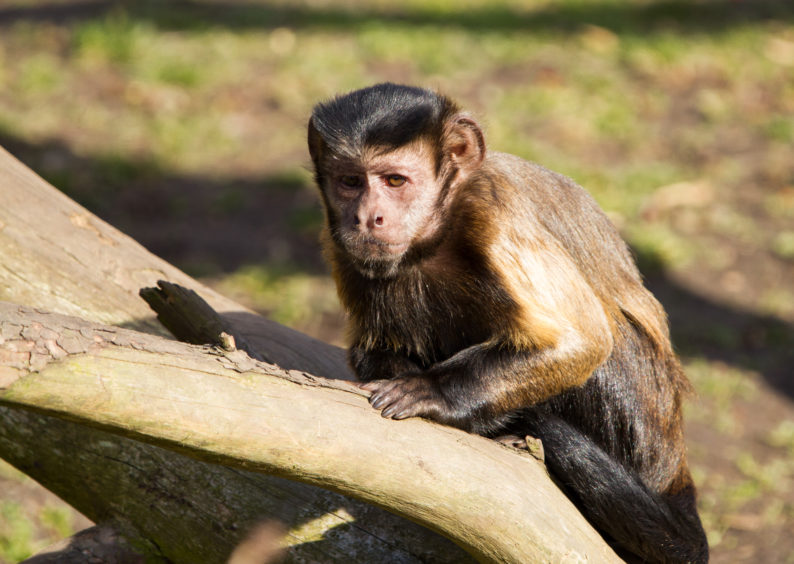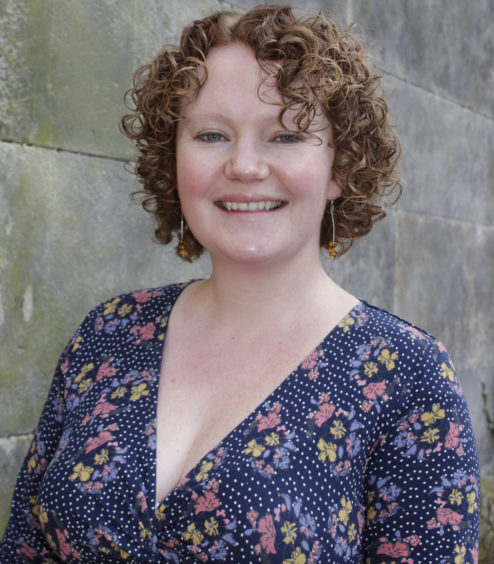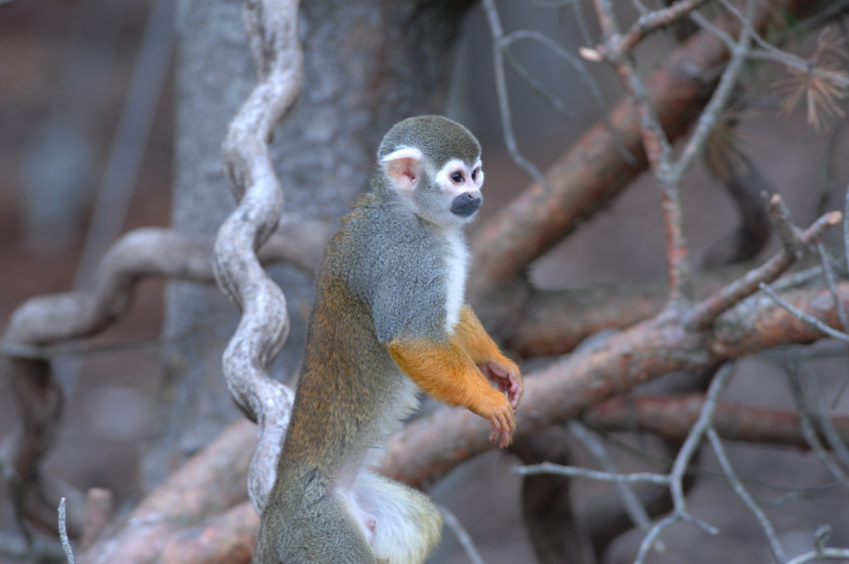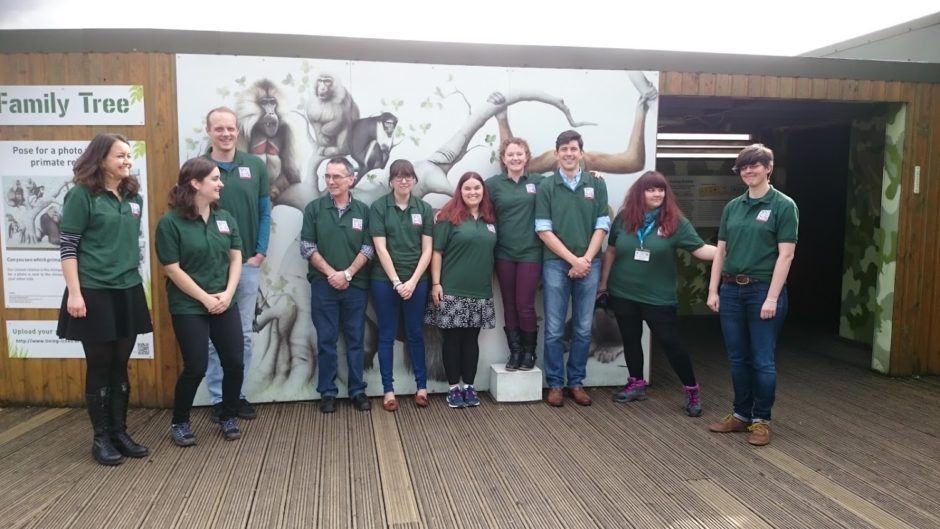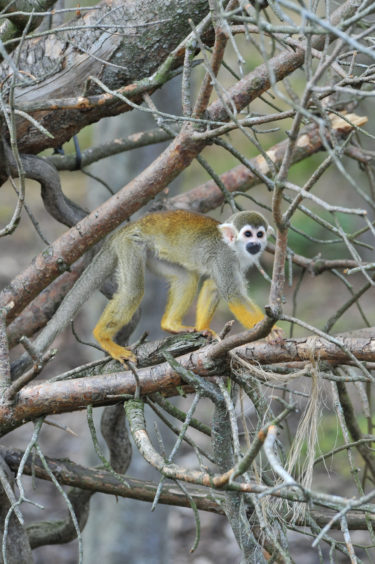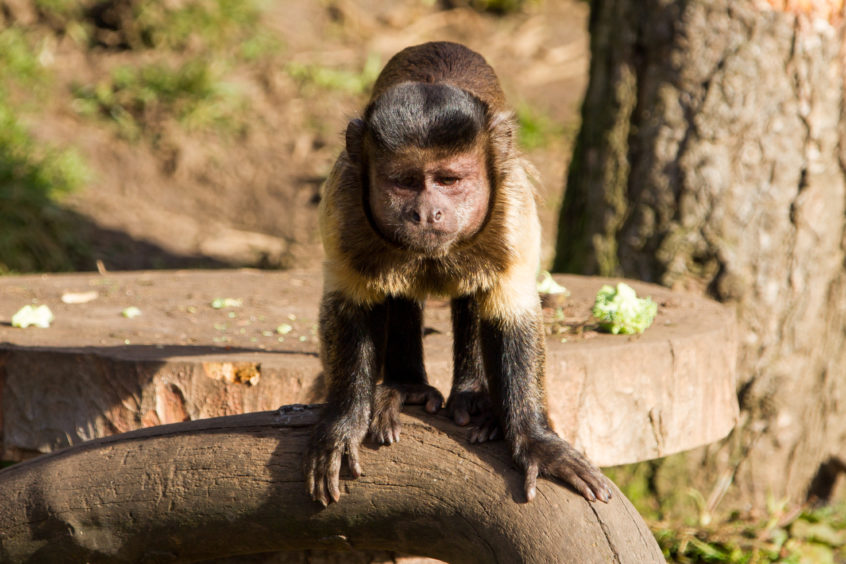Michael Alexander speaks to St Andrews University psychologist Dr Amanda Seed about the 10th anniversary of the pioneering Living Links monkey research project run in collaboration with Edinburgh Zoo.
It’s often said that a person of sound mind should never work with children or animals, but St Andrews University comparative psychologist Dr Amanda Seed is delighted to work with both.
That’s because the senior lecturer at the School of Psychology and Neuroscience is also the director of Living Links – a collaborative project between St Andrews University and Edinburgh Zoo –which studies our closest living relatives – monkeys and apes – to learn more about the origins of the human mind.
The project celebrates its 10th anniversary on Thursday November 29.
And in an interview with The Courier to mark the occasion, Dr Seed said benefits of the research include the design of better enclosures for captive primates and a richer understanding of intelligence and the evolution of cognition.
“It’s really a relatively short amount of time evolutionarily speaking since we humans diverged from monkeys, explained Dr Seed, who compares different species to triangulate on core principles about psychological evolution.
“When you consider our closest living relatives the bonobos and the chimpanzees, it was just six million years ago that we shared a common ancestor.
“For the monkeys that we study it is more like 30 million years. That’s a little bit longer but still not a huge amount of time – just 10% of the 300 million years since we split evolutionarily from the dinosaurs.
“But a lot of the change in humans has happened relatively recently. Our research aims to understand why.”
Opened in 2008, Living Links is a field station and research centre of St Andrews University, established in partnership with the Royal Zoological Society of Scotland and Edinburgh Zoo.
Funded through a grant from the Strategic Research Development Scheme of the Universities’ Scottish Funding Council, it is designed to support studies by scientists at the universities of St Andrews, Stirling, Edinburgh and Abertay, who together form the Scottish Primate Research Group (SPRG).
Members of SPRG study primate behaviour at many field sites in the wild, as well as in captivity.
At Edinburgh Zoo, Living Links has large outside and inside enclosures in which capuchin monkeys and squirrel monkeys live together.
This reflects the fact that they form mixed-species groups in the wild.
As ‘living links’ to the cousins from which we all evolved, the study of their behaviour is at the core of research into how they have evolved in parallel.
While anthropological fossil research has concluded that the catalyst for human development was when ancestral monkeys evolved to stand up and literally walk out of the forests of Africa for the savannah, Dr Seed said it’s still a “big puzzle” why this happened.
What is known is that human ancestors “exploited a new niche” of landscape and climate while the other great apes continued living in the same tropical rainforests as before.
Today, the bodies and minds of these monkeys are more suited to the forest living environment where they remained.
But just as humans have adapted to their new environments, the monkey species that stayed have changed as well in the sense that as much time has passed and they’ve had as many descendants.
Exploitation of the new environment was in itself a causation of change for human ancestors.
For example, big game hunting would have required widespread co-operation which required changes in how humans think, changes to how social structures work, and more role differentiations.
But while a diverse array of human cultures developed, what’s common worldwide is that they exist and represent group membership.
“We share a lot of our DNA with monkeys,” said Dr Seed.
“We are not really looking at massive evolutionary encoded differences. But it’s a very interesting puzzle to work on. A lot of people have tried and many different theories exist to how the human mind came to be this way.
“What we try to do is widen out the study to about 80 primate species. We can look at which ones are living in really complicated social groups, which ones have particularly complicated diets, and look for changes there that led cognition to change.
“That’s one thing Living Links can do because we have our two sister species. We’ve got the squirrel monkey and the capuchin monkey.
“They live in exactly the same forests in South America, they follow each other around.
“But the capuchin has a very different diet – they are more extractive foragers while the squirrel monkey kind of picks up scraps and insects from the environment.
They are very similar is some respects but they have differences in how they live their lives in that habitat.”
With the research facilities at Edinburgh Zoo open and transparent to the public, and because the capuchin and squirrel monkeys live in tropical rainforests that are under threat as a habitat, Dr Seed said that by showing the monkeys up close and personal, it was hopefully another way to motivate conservation efforts and raise awareness of wider issues.
The project is also working closely with the zoo to develop further outreach and education projects.
